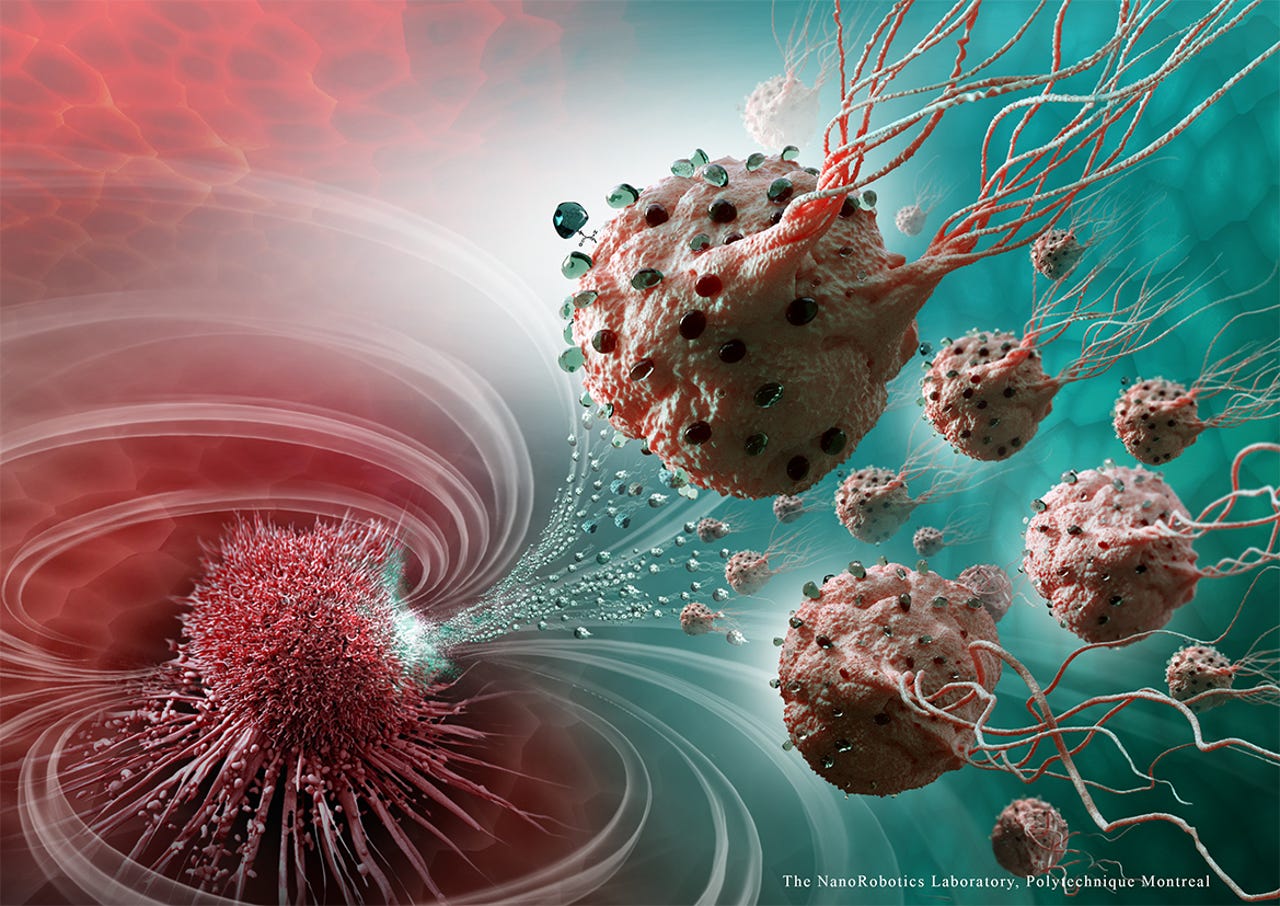How tiny 'natural nanobots' attack cancerous cells


Image: Polytechnique Montréal
Chemotherapy kills cancer, but it also attacks healthy cells. This unfortunate phenomenon makes us sick and can cause permanent damage to our bodies. Of course the good (saving lives) still outweighs the bad, so we continue to use powerful drugs to kill cancer. But with the latest technology, we can do better.
Delivering medicine directly where it's needed not only minimizes side effects but also makes the drugs more effective. That's why researchers are designing tiny robots to precisely carry drugs to cancerous cells while leaving nearby healthy cells alone.
Imagine armies of millions of miniature robots traveling through blood streams to sneak up on cancerous cells. It sounds like a fantasy because it is. Despite admirable efforts by scientists, many technological challenges still need to be overcome.
To deliver drugs to cancerous cells, nanobots must: be small enough to penetrate a tumor through blood vessels, be able to propel themselves and navigate while avoiding obstacles, have a mechanism for detecting oxygen levels (which indicate active cancer cells), be biocompatible, able to carry drugs, and have on onboard power source. Oh, and on top of all that, they have to be cheap to produce, since they are so tiny that it would take hundreds of millions of robots to deliver the right dosage of drugs. It's a long wish list that even the world's best scientists will struggle to complete.
In the meantime, a team of researchers from Montreal developed an alternative: natural nanobots are almost as good as artificial intelligent nanobots. They used nanotechnology to load bacteria with cancer-fighting drugs and guide them to the cancerous cells. Sylvain Martel, one of the authors of the natural nanobot study that published in Nature Nanotechnology in August, explained to ZDNet how the bacteria navigate:
Each bacterium has a chain of nanoparticles that acts like a microscopic magnetic compass and we exploit it to indicate to the bacteria the direction of the tumor. Once in the tumor, we switch off the magnetic field and then the bacteria will rely on their onboard oxygen sensors to swim towards the regions of active cancer cells.
The researchers proved that their cancer-fighting bacteria works in mice, and now they are seeking funding to prove that the natural nanobots would be safe for people. Human trials are expected to begin in the next few years. Although the bacteria is quite effective, it can't be customized and controlled as well as a man-made robot.
Ultimately, Martel suggests a hybrid approach that combines artificial and natural nanobots. He expects that nanotechnology and genetics are both progressing quickly, and each field will offer unique solutions. His predictions are summarized in another scientific paper that published in the March issue of Biomicrofluidics:
Although the two approaches will be complementary for many types of interventions, efforts will continue to replace microorganism-based agents with artificial implementations. This competition will continue for many years to come as evolving technological trends will offer new possibilities for artificial agents, while genetics will expand the range of possibilities for microorganism-based agents.